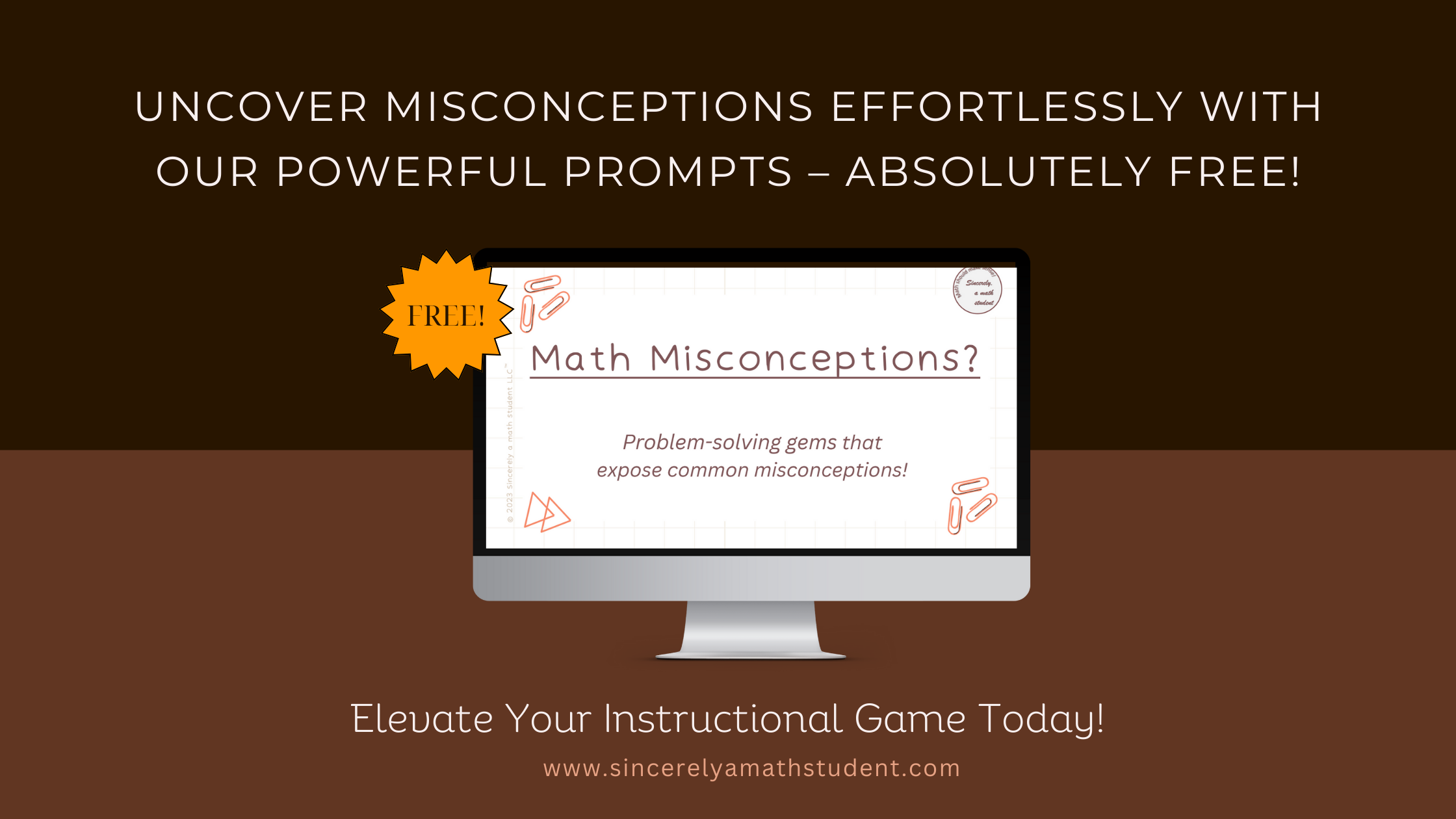My Math Story
From Personal Struggle to Professional Triumph:
My Journey in Teaching Middle Grades Math
Have you ever stopped to ponder the profound impact your personal math story has had on your approach to teaching mathematics? As I reflect on my own math story, I realize that every twist and turn played a pivotal role in shaping my understanding of the subject, as well as the way I teach the subject.
My Math Story:
My earliest memory of math class is a timed test. I can still feel the knot in my stomach each time the teacher pulled out the timer and passed out half-sheets of paper in the face-down position. I had no problem with addition and multiplication, but subtracting nine from 100? Cue the waterworks! See, those timed tests didn't just measure math skills; they apparently determined your entire math identity. Speed was the holy grail of mathematical ability—at least that was what my teacher reiterated to my unsuspecting parents.
My teacher was unaware that the emphasis on speed created a whole unspoken drama among us students. Finish first, and you risked becoming a recess loner—friends fleeing from you like you were a math nerd. Finish last, and brace yourself for the lunchtime teasing extravaganza. Ah, the subtle politics of the elementary school math battlefield! The effects of this early memory have lingered for over three decades. Today, the mere thought of speed reigning supreme in math classrooms makes me cringe.
My next memory of math class shaped my identity as a learner. History and Literature were my jam because I loved the content. I was successful in mathematics because all my teachers used the classic lecture-style instructional delivery. This instructional style was my favorite because I enjoyed sitting quietly and taking notes during instruction. I remember one of my high school math teachers was a notebook maestro. I believed that my ability to meticulously organize a collection of practice pages, definitions, and class notes was what made me a good student. When this behavior also yielded high course grades, I wrongly assumed it meant I was good at math.
Impact on Teaching
In my journey as an educator, I've come to understand the profound impact of fostering engaging discussions in the learning process. My early experience with speed had riddled me with math anxiety, which led me to believe I was most comfortable hiding during math class. This personal revelation fueled my commitment to two principles in my teaching approach: reducing the emphasis on speed and eliminating hiding spots for students during instruction.
One effective teaching strategy that I use to de-emphasize speed in the math classroom is the deliberate use of wait time.
The brilliance of this approach lies in its simplicity; no additional materials are needed. Wait time is the intentional pausing after a question is posed, creating valuable moments for students to engage in deeper individual reflection. The opportunity for deeper reflection often yields richer responses. This instructional strategy helps to transform your classroom into a community of learners, rather than a collection of isolated students.
Building a sense of community in the classroom is the cornerstone of effective learning. When students feel a sense of safety, they are more likely to take risks and participate in tasks, big or small. In contrast, an unsafe environment can hinder their willingness to share thoughts, express confusion, or articulate their learning process.
One of my go-to daily formative assessment prompts is a simple yet powerful question: What helped you learn today?
The responses to this question provide valuable insights, positioning me to identify and reinforce the successful strategies that work for my current students.
Conclusion:
As math educators, it's crucial for us to reflect on our own math stories and recognize how they shape our teaching philosophies. By detailing our math story, we can illustrate how personal struggles become professional triumphs in teaching middle grades math. My math story led me to the realization that fostering engaging discussions, implementing strategies like intentional wait time, and building a sense of community in the classroom, can create a space where students feel safe, willing to take risks, and actively participate in their own math story.
Thank you for letting me share my math story with you! I’d love to hear your math story as well. How has it impacted your approach to teaching mathematics?

